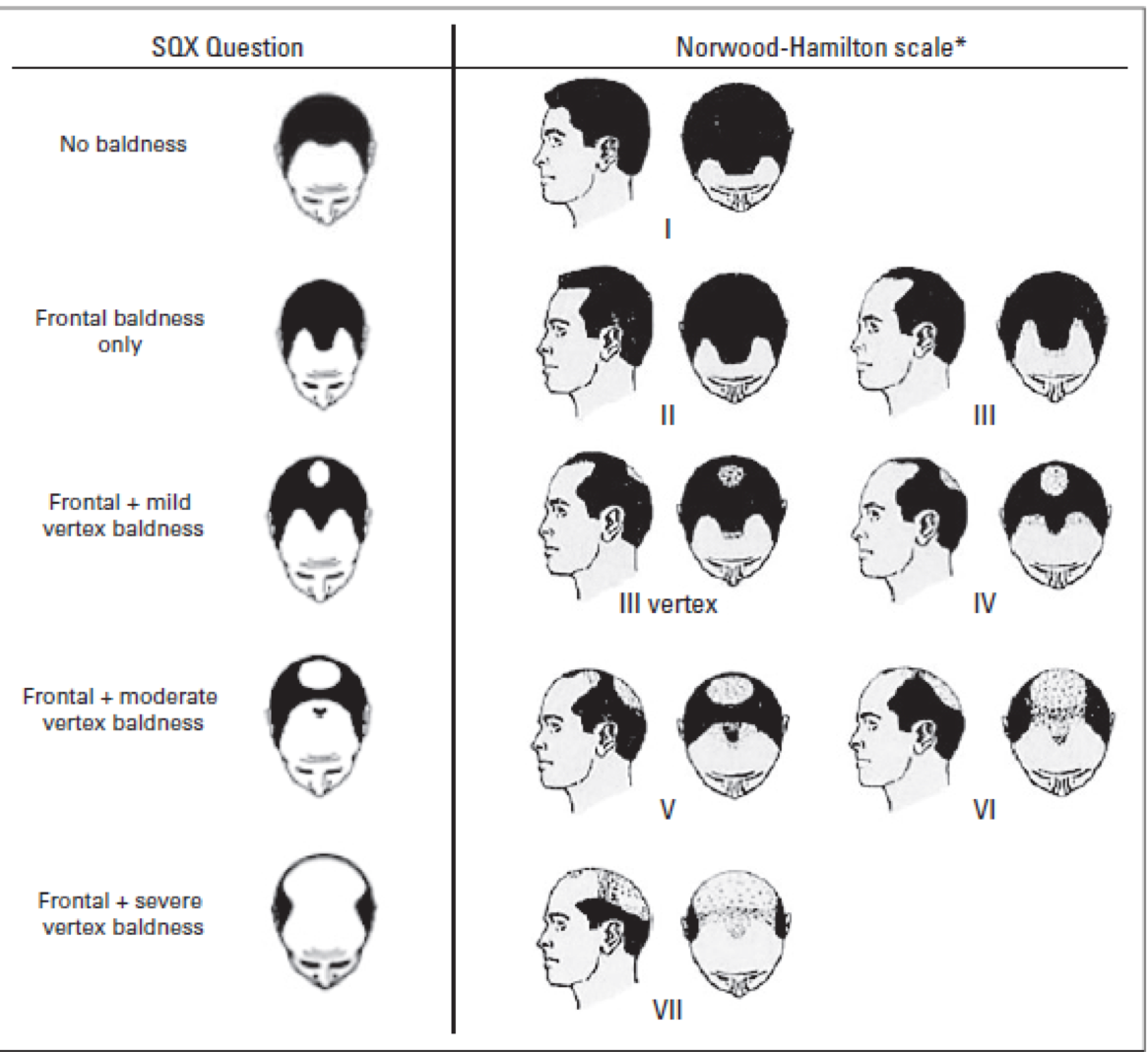Is There a Link Between Male Pattern Baldness and Prostate Cancer?
Some of you might have heard that there could be an association, or link, between male pattern baldness and the risk of prostate cancer. This question has a complicated answer, and our extensively trained hair restoration surgeon, Dr. Matthew Lopresti, has additional information to help you better understand what science and medicine know about this serious issue.
The quick and skinny answer: “Follow-up with your primary doctor for routine care and open up dialogue in regard to your future risk of prostate cancer, taking all factors into account. But, and this is important, I would not thus far hang your hat on baldness being a significant element.”
– Dr. Lopresti
Cancer of the prostate is the second leading cause of cancer death in men and one of the most prevalent cancers in the world. Some of the known factors that can lead to an increased risk of prostate cancer are: age, race (black men have an elevated risk), family history of prostate cancer, and genetic abnormalities. Not all types of prostate cancer place a man at high risk of death; many, in fact, are slow-moving cancers that can be treated often very successfully. As a result, recent research is focused on identifying the factors that indicate a high risk for aggressive cancers.
The first suggestion that a connection exists between male pattern baldness and aggressive prostate cancer was in 2015. A large study involving 39,000 male participants was published in the Journal of Clinical Oncology and indicated there may be an association between a specific type of hair loss and aggressive versions of prostate cancer. The authors of the study accounted for numerous variables, and they ultimately attributed their findings to changes in the affected men’s endogenous hormone levels.
While many smaller studies have also looked into this question, typically with notable design and statistical flaws, this was the largest epidemiological study evaluating this possible link between male pattern baldness and aggressive prostate cancers to date. That said, it’s important to remain skeptical. The study did not prove there is a correlation between prostate cancer risk and male pattern baldness (aggressive or not). In addition, a trend would be expected to be seen especially in those with severe balding and prostate risk. Moreover, the results are largely based on these patients remembering their pattern of balding at 45 years old. And people’s memories can be quite imperfect.
The study does give researchers and doctors a lot to consider, and additional studies should be performed to determine if an association does, in fact, exist between these disorders. Ideally, male baldness patterns coupled with other factors could be collected by primary care doctors to firm up this association.

References:
1. Zhou CK, Pfeiffer RM, Cleary SD et al. Relationship between male pattern baldness and the risk of aggressive prostate cancer: an analysis of the prostate, lung, colorectal and ovarian cancer screening trial. J Clin Oncol 33: 419-425.
2. Ryan CJ, Chan JM. Hair, hormones, and high risk prostate cancer. J Clin Oncol 33: 386-387.
3. Penson DF. Re: Relationship between male pattern baldness and the risk of aggressive prostate cancer: an analysis of the prostate, lung, colorectal and ovarian cancer screening trial. Journal of Urology 194:990. (Supplemental Index)

